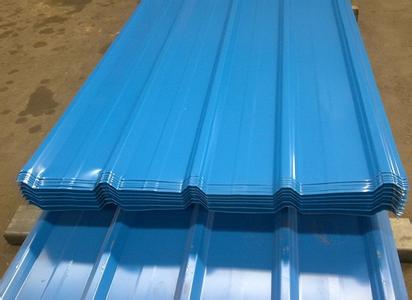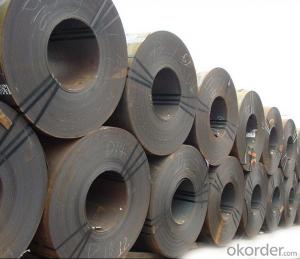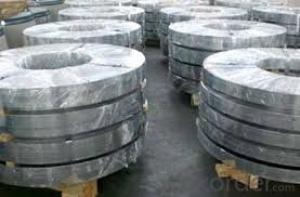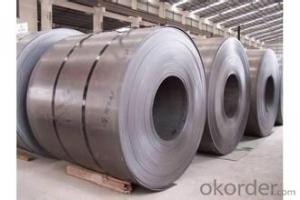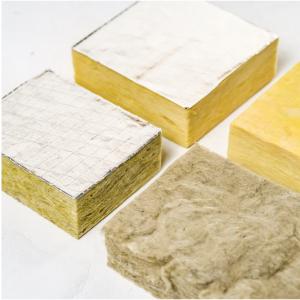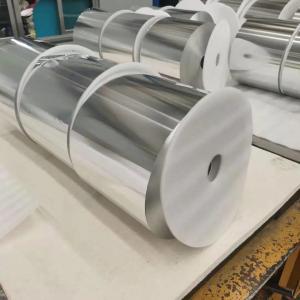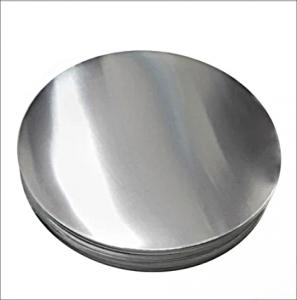Royal Blue Pre-Painted Galvanized Steel Mesh Sheets
- Loading Port:
- Shanghai
- Payment Terms:
- TT or LC
- Min Order Qty:
- 100 m.t.
- Supply Capability:
- 10000 m.t./month
OKorder Service Pledge
OKorder Financial Service
You Might Also Like
1. Pre-Painted GI/GL Steel Coil Description:
With GI as base material, after pretreatment (degrease and chemical treatment ) and liquid dope with several layers of color, then after firing and cooling, finally the plate steel is called pre-painted galvanized (aluzinc) steel. Pre-painted galvanized steel is good capable of decoration, molding, corrosion resistance. It generally displays superior workability, durability and weather resistance.
2.Main Features of the Pre-Painted GI/GL Steel Coil:
• Excellent process capability
• Smooth and flat surface
• Workability, durability
• Excellent heat resistance performance
• High strength
• Good formability
• Good visual effect
3.Pre-Painted GI/GL Steel Coil Images
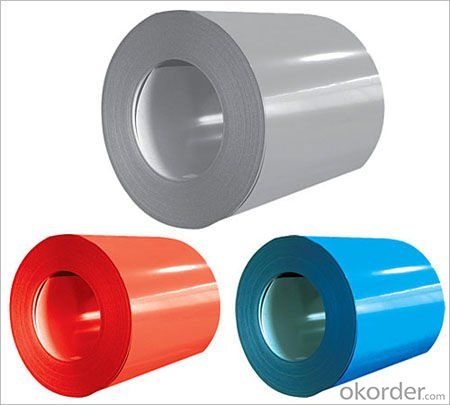
4.Pre-Painted GI/GL Steel Coil Specification
Standard: AISI, ASTM, BS, DIN, GB, JIS
Grade: DX51D, DX52D
Thickness: 0.17-2.0mm
Brand Name: KMRLON
Model Number: coil
Type: Steel Coil
Technique: Cold Rolled
Surface Treatment: Coated
Application: Boiler Plate
Special Use: High-strength Steel Plate
Width: 20-1250mm
Length: customized
commoidty: pre-painted galvanized steel coil
Thickness: 0.13-4.0mm
width: 20-1250mm
zinc coating: 40-180g/m2
printing thickness: top side: 20+/-5 microns, back side: 5-7 microns
color: all RAL color
surface treatment: color coated
coil weight: 4-7 tons
coil ID: 508/610mm
packaging: standard seaworthy packing
5.FAQ of Pre-Painted GI/GL Steel Coil
1. What’s the application of this product?
Roof, roof structure, surface sheet of balcony, frame of window, etc.
2. What’s the brand of the paint?
We use the best brand of all of the word—AKZO.
3. How to guarantee the quality of the products?
We have established the international advanced quality management system,every link from raw material to final product we have strict quality test;We resolutely put an end to unqualified products flowing into the market. At the same time, we will provide necessary follow-up service assurance.
4. How long can we receive the product after purchase?
Usually within thirty working days after receiving buyer’s advance payment or LC. We will arrange the factory manufacturing as soon as possible. The cargo readiness usually takes 15-25 days, but the shipment will depend on the vessel situation.
- Q:Are steel sheets suitable for oil rig platforms?
- Oil rig platforms benefit greatly from the use of steel sheets. The reason for this lies in the exceptional strength and durability of steel, which makes it a popular choice in their construction. Given the harsh environmental conditions that oil rig platforms face, such as extreme temperatures, high winds, and corrosive saltwater, steel has proven itself capable of withstanding these challenges effectively. Steel sheets offer a solid and dependable base for oil rig platforms. They ensure that the platforms can bear the weight of the rig, equipment, and personnel without compromising stability or safety. The high strength of steel allows for the construction of large and intricate structures without sacrificing stability. Moreover, steel exhibits remarkable resistance to corrosion, making it an ideal material for offshore applications. Oil rig platforms are constantly exposed to saltwater, which can cause corrosion and weaken other materials. However, steel sheets can be treated with protective coatings to enhance their resistance to corrosion and extend their lifespan. In addition to its strength and corrosion resistance, steel is a versatile material that lends itself to easy shaping and fabrication. This versatility allows for efficient and cost-effective construction processes, reducing the time and resources required for installation and maintenance. In conclusion, steel sheets are a suitable choice for oil rig platforms due to their strength, durability, corrosion resistance, and versatility. They provide a reliable and robust foundation for offshore drilling operations, ensuring the safety and longevity of the platform in challenging environments.
- Q:Are the steel sheets resistant to impact or bending?
- Yes, steel sheets are generally resistant to both impact and bending due to their high strength and rigidity.
- Q:Are steel sheets suitable for oil and gas industry applications?
- Yes, steel sheets are suitable for oil and gas industry applications. Steel sheets offer excellent strength, durability, and corrosion resistance, making them ideal for various applications in the oil and gas industry, such as storage tanks, pipelines, and offshore platforms. Additionally, steel sheets can withstand high temperatures and extreme conditions, making them a reliable choice for this industry.
- Q:What is the process of embossing on steel sheets?
- Embossing on steel sheets involves the creation of raised or recessed designs on the surface. This technique is commonly used for texture enhancement, aesthetic improvement, or to enhance the mechanical properties of the steel. To begin the embossing process, the steel sheets are prepared. This involves cleaning the surface to remove any dirt, oils, or coatings that could interfere with the embossing. The sheets are then inspected for imperfections or defects that may impact the embossing quality. Once prepared, the steel sheets are placed in an embossing machine consisting of two or more rollers. These rollers have engraved patterns that will be transferred onto the steel sheets. They are typically made of hardened steel or other durable materials. As the steel sheets pass through the embossing machine, pressure is applied to the rollers, causing them to press against the steel surface. This creates a plastic deformation in the sheet, resulting in the desired raised or recessed pattern. The depth and intensity of the embossing can be adjusted by controlling the pressure applied by the rollers. In certain cases, heat may be used during the embossing process to soften the steel sheets, making them more malleable. This allows for deeper and more intricate embossing patterns. The temperature and duration of the heating process depend on the type of steel and desired outcome. After embossing, the steel sheets may undergo additional treatments such as cleaning, coating, or polishing to further enhance their appearance and protect them from corrosion. These finishing steps ensure that the embossed steel sheets meet quality standards and are ready for use. Overall, embossing on steel sheets is a versatile and effective method for adding texture and visual interest. It requires careful preparation, precise machinery, and skilled operators to achieve consistent and high-quality results.
- Q:What are the different edge finishes available for steel sheets?
- There are several different edge finishes available for steel sheets, depending on the desired aesthetic and functional requirements. Some of the most common edge finishes for steel sheets include: 1. Mill Edge: This is the standard edge finish that comes directly from the steel mill. It is a rough, unfinished edge that has not been further processed or smoothed. It is typically used for applications where the edge appearance is not critical, such as in industrial or structural applications. 2. Trimmed Edge: In this edge finish, the rough mill edge is trimmed or sheared to remove any irregularities or burrs. It provides a cleaner and more uniform edge compared to the mill edge, making it suitable for applications where the edge appearance is important. 3. Deburred Edge: This edge finish involves removing any sharp or jagged edges through a deburring process. It provides a smooth and rounded edge, enhancing safety and reducing the risk of injury. Deburred edges are commonly used in applications where handling or contact with the edge is frequent, such as in automotive or appliance manufacturing. 4. Beveled Edge: A beveled edge is achieved by cutting or grinding an angle along the edge of the steel sheet. It creates a sloping or chamfered edge, which can improve the aesthetics and functionality of the sheet. Beveled edges are often used in architectural applications, as they can enhance the appearance and facilitate better jointing or welding. 5. Rolled Edge: This edge finish is created by rolling or bending the edge of the steel sheet to form a rounded or folded edge. Rolled edges provide a smooth and finished appearance, making them suitable for applications where the edge will be visible, such as in decorative or furniture manufacturing. 6. Hemmed Edge: Hemming involves folding the edge of the steel sheet over itself to create a double-layered edge. It provides a strong and finished edge that is resistant to fraying or unraveling. Hemmed edges are commonly used in applications where the edge will be exposed and require added durability, such as in roofing or sign manufacturing. These are just a few examples of the different edge finishes available for steel sheets. Each finish has its own unique characteristics and advantages, allowing for customization based on specific requirements and preferences.
- Q:Can steel sheets be used for automotive exhaust systems?
- Yes, steel sheets can be used for automotive exhaust systems. Steel is a common material for exhaust systems due to its durability, resistance to heat and corrosion, and cost-effectiveness. Steel sheets are often formed into pipes, mufflers, and other components of the exhaust system to efficiently channel and expel exhaust gases.
- Q:How do steel sheets perform in electrical conductivity?
- Steel sheets have low electrical conductivity compared to other metals such as copper or aluminum.
- Q:Can steel sheets be used for agricultural applications?
- Yes, steel sheets can be used for agricultural applications. They are commonly used for building structures such as barns, sheds, and storage facilities. Steel is durable, resistant to weather conditions, and provides excellent protection for agricultural equipment and livestock. Additionally, it can be used for fencing, roofing, and as a material for various agricultural machinery.
- Q:Can steel sheets be used for magnetic shielding?
- Yes, steel sheets can be used for magnetic shielding. Steel is a ferromagnetic material, meaning it can easily be magnetized and demagnetized. When placed between a magnetic source and an object, steel sheets can help redirect and absorb the magnetic field, thus providing effective shielding against magnetic interference.
- Q:What are the different sizes of steel sheets available?
- Steel sheets are available in a wide range of sizes, catering to various applications and industries. The sizes of steel sheets can vary depending on factors such as thickness, width, and length. In terms of thickness, steel sheets are commonly available in gauges ranging from 7 to 30. The higher the gauge number, the thinner the sheet. Thinner sheets, such as those with a gauge of 30, are often used for applications that require flexibility, while thicker sheets, such as those with a gauge of 7, are typically used for heavy-duty applications that require high strength and durability. When it comes to width, steel sheets are available in a range of options. The most common widths include 36 inches, 48 inches, and 60 inches. However, customized widths can be obtained for specific requirements. Regarding length, steel sheets are typically available in standard lengths of 96 inches and 120 inches. These lengths are commonly used in various industries. However, like width, the length can also be customized to fit specific needs. It is important to note that the availability of different sizes of steel sheets may vary depending on the supplier and the specific grade of steel being used. It is advisable to consult with a steel sheet supplier or manufacturer to determine the exact sizes available for a particular application.
1. Manufacturer Overview |
|
|---|---|
| Location | |
| Year Established | |
| Annual Output Value | |
| Main Markets | |
| Company Certifications | |
2. Manufacturer Certificates |
|
|---|---|
| a) Certification Name | |
| Range | |
| Reference | |
| Validity Period | |
3. Manufacturer Capability |
|
|---|---|
| a)Trade Capacity | |
| Nearest Port | |
| Export Percentage | |
| No.of Employees in Trade Department | |
| Language Spoken: | |
| b)Factory Information | |
| Factory Size: | |
| No. of Production Lines | |
| Contract Manufacturing | |
| Product Price Range | |
Send your message to us
Royal Blue Pre-Painted Galvanized Steel Mesh Sheets
- Loading Port:
- Shanghai
- Payment Terms:
- TT or LC
- Min Order Qty:
- 100 m.t.
- Supply Capability:
- 10000 m.t./month
OKorder Service Pledge
OKorder Financial Service
Similar products
New products
Hot products
Hot Searches
Related keywords



